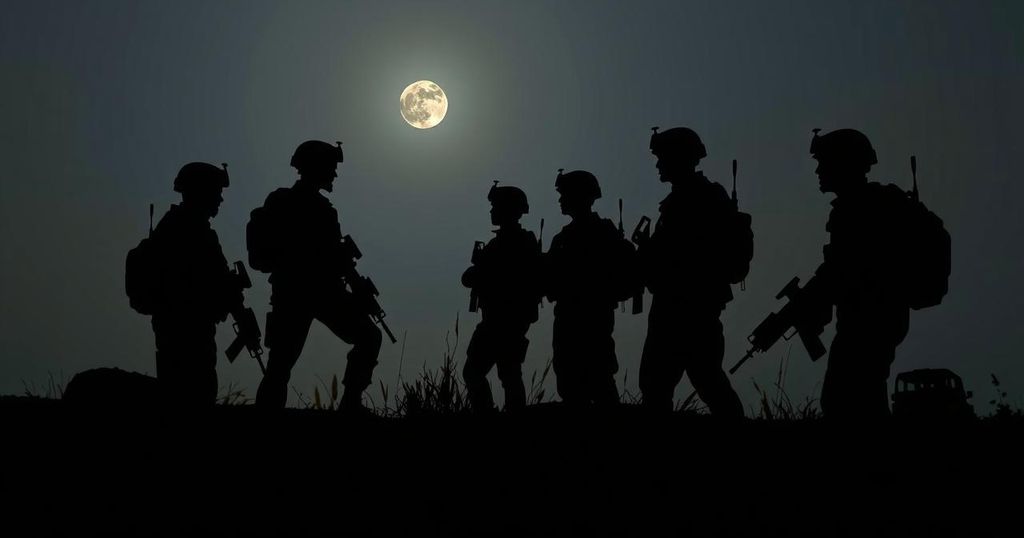Clarification on the Presence of U.S. Troops in Combat Zones
Summary
During the recent presidential debate, Vice President Kamala Harris claimed that no U.S. troops are in active combat zones, which is inaccurate. Approximately 1,000 troops are stationed in Syria and 2,500 in Iraq, primarily for counterterrorism operations against ISIS and monitoring Iranian activities. Recent incidents highlight the ongoing risks faced by military personnel. The U.S. maintains a significant military presence globally, involving over 170,000 troops at more than 800 bases as of 2023, despite withdrawal from Afghanistan in 2021.
During the recent presidential debate, Vice President Kamala Harris made an assertion that U.S. military personnel are not currently involved in any active combat zones, stating, “And as of today, there is not one member of the United States military who is in active duty in a combat zone, in any war zone around the world, the first time this century.” However, this statement is misleading. According to the U.S. Department of Defense, there are approximately 1,000 U.S. troops stationed in Syria and around 2,500 in Iraq. These military personnel are deployed primarily to combat the resurgence of the Islamic State group and to monitor Iranian activities and supply routes to various militias. Although large-scale hostilities have diminished since the height of civil conflicts in both countries, low-intensity conflicts continue, placing U.S. troops at risk. An illustrative event occurred at the end of August, when a U.S. military operation in Iraq resulted in the deaths of at least 15 Islamic State operatives. During this raid, seven American soldiers were wounded as they faced armed resistance. Additionally, earlier this year, three American soldiers were killed, and 40 others wounded in Jordan due to an Iranian drone attack near the Syrian border. These instances exemplify the ongoing dangers faced by U.S. service members overseas. U.S. military involvement in the region is part of Operation Inherent Resolve, a global coalition aimed at stabilizing Iraq and Syria. Negotiations are currently underway regarding the potential withdrawal of several hundred U.S. troops from Iraq by next September. Meanwhile, the Pentagon has deployed defensive military capabilities to the Middle East in response to heightened tensions following the Gaza conflict, reinforcing the U.S. posture against possible Iranian threats. Concurrently, as of 2023, approximately 170,000 American troops are stationed at over 800 military bases worldwide. Despite the withdrawal from Afghanistan in 2021, U.S. military operations persist across various regions, including the Middle East and Africa, often involving direct combat, intelligence gathering, and military training. Research from the Costs of War project highlights America’s extensive overseas military presence and the evolving objectives of the Pentagon over the past two decades.
The discussion of U.S. troop deployment and military engagement overseas has gained prominence in contemporary political discourse. Vice President Kamala Harris’s comments during the presidential debate reflect a broader conversation about American military presence and its implications for foreign policy. With an extensive deployment of troops in various global regions, the reality of U.S. military operations is often more complex than many perceive. Recent U.S. military involvements in Iraq and Syria, as well as a significant military presence in response to geopolitical tensions, underscore the ongoing nature of American military engagement worldwide, despite public sentiments trending toward reducing such involvements. Understanding this backdrop is essential in evaluating any claims regarding the status of U.S. military forces abroad.
In conclusion, Vice President Kamala Harris’s assertion regarding the absence of U.S. troops in combat zones is not supported by current military data. Approximately 1,000 troops in Syria and 2,500 in Iraq actively engage in operations there, maintaining a presence in regions still affected by low-intensity conflict. The ongoing U.S. military strategy reflects a complex engagement aimed at addressing various global security threats, confirming that American forces remain active worldwide. This distinction is vital for public understanding of U.S. military commitments and the challenges faced by service members today.
Original Source: www.usatoday.com





Post Comment